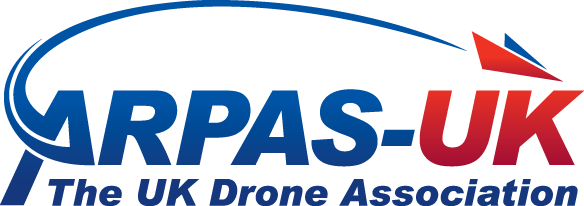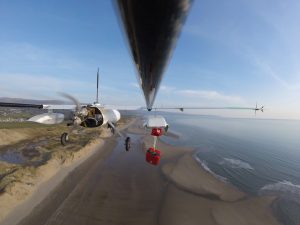Skyfarer Ltd has secured its first Beyond Visual Line of Sight (BVLOS) approval. This BVLOS approval commenced a week of flight operations at the Snowdonia Aerospace Centre, Llanbedr Airfield earlier this year.
Georgia Hanrahan, Project Manager:
This is a significant step forward for operators in our industry. This approval allows us to access the untapped potential that commercial drones have to benefit society safely, for those that secure this approval.
What BVLOS means for Skyfarer
Achieving BVLOS approval has been an important milestone for Skyfarer, allowing for a wide range of data capture, the chance to react to unexpected challenges, and an opportunity for the operations team to familiarise themselves with flight procedures and processes in preparation for their upcoming trial this year.
“Just two weeks after we were awarded BVLOS, we were out there flying. It was a big step for us,” says Remote Pilot and Flight Ops Engineer, Yahya Abulfaraj.
Beyond Visual Line of Sight approval is a very important requirement to enable drone operators to fly and plan longer, more ambitious flights, which will widen the scope of how drones can be used for good across the UK and globally.
However, Beyond Visual Line of Sight flight wouldn’t be possible without partners Altitude Angel, who provide the key detection and avoid technology enabling Skyfarer to deconflict and avoid obstacles whilst not having an eye on the drone in flight.
Yahya Abulfaraj says that “this type of approval doesn’t happen overnight. In fact, this regulation journey started over 2 years ago.”
“We started applying for BVLOS in late 2020 and it involved many amendments before we finally received the approval” he adds.
This was Skyfarer’s second time at the Snowdonia Aerospace Centre but the first of it’s kind for BVLOS operations. The Snowdonia Aerospace Centre was the perfect place to enable the team to practice their processes and procedures, implement new standards of operations and conduct important data captures.
Snowdonia Aerospace was approved by the Civil Aviation Authority in September 2021, following 2 years of intensive review and investment, to become the first commercial (non-military) controlled and managed “Permanent Danger Area” in the UK, in support of the regular research, development, testing and evaluation of drones and other novel aerospace systems. This is an area that can be used for operators like Skyfarer to test the technology in a safe and secure environment, without the need for constant regulatory applications. The Snowdonia Aerospace Centre in sense is a home for all aircraft, UAV or otherwise to develop and innovate.
Lee Paul, CEO of the Centre:
We were delighted to host and support Skyfarer on their exciting journey in securing their BVLOS approvals. This is a significant step forward for their business development and we look forward to working with them as they continue to look to undertake regular and routine BVLOS operations.
We have invested substantially in the facilities and services available at the airfield and continue to provide companies like Skyfarer the opportunity to test and evaluate their operations in an ideal environment in the UK. Too many UK businesses have been previously unable to test their novel aerospace system in the UK due to the lack of dedicated restricted commercial airspace and have had to therefore look to overseas facilities. The ability for UK business to now undertake their R & D and testing in the UK in a unique environment is not only commercially advantageous but also retains the investment and economic activity in the UK.
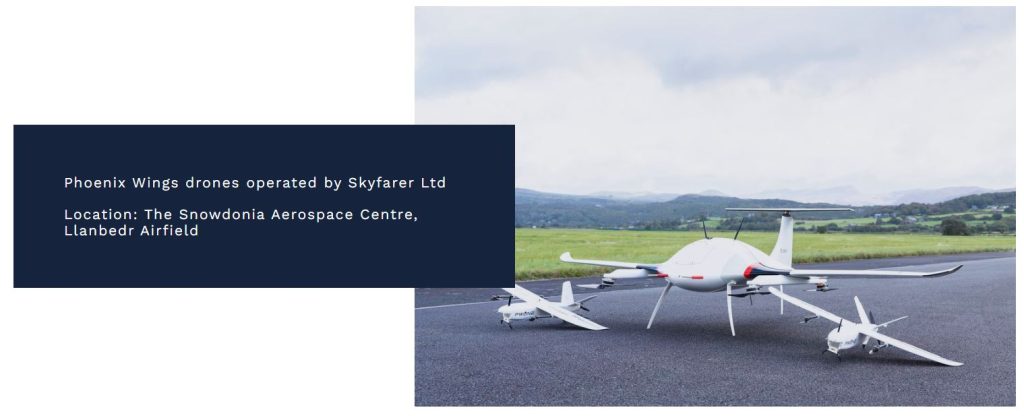
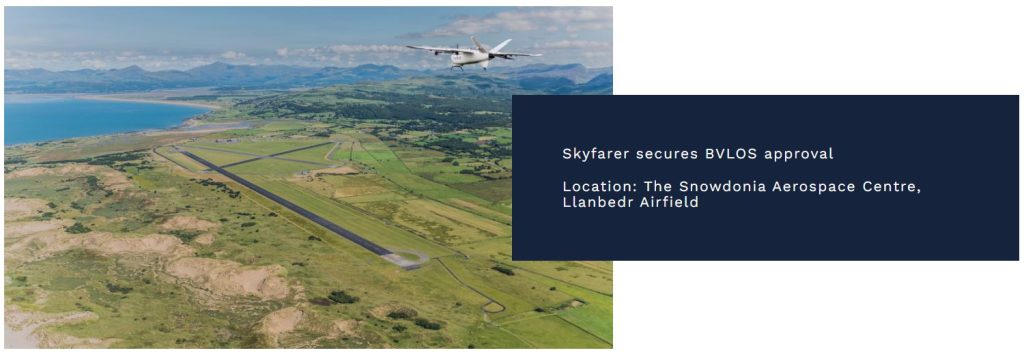
What did Skyfarer achieve?
There were 2 main routes that Skyfarer used throughout the trial, whilst they racked up an impressive amount of BVLOS flight hours.
The start of the week saw the team running operations and conducting procedure checks to ensure that they were ready for a week of intensive flights, including a short test flight to a nearby location 500m away, before commencing a 14km flight.
On Tuesday the Skyfarer team were focused on capturing data whilst operating in difficult and unexpected weather conditions that showed no signs of giving up in the days ahead.
The later part of the week was a highlight for Skyfarer, as the team secured 11 BVLOS flights in a 6 hour window, with a total distance of 160kms flown.
“This was one of the most successful days in Skyfarer history to date” says Yahya.
Whilst this was a successful trial and enabled Skyfarer to test their operational capability in preparation for their upcoming trial this year, the team encountered some unexpected challenges during the BVLOS test flights to a local beach in the area.
During the later part of the week, the team had planned to land in a specially cordoned-off area along a beach. However, when the drone arrived near the landing, the Skyfarer operations team realized something was wrong. A man from one of the nearby families watching from behind the cordoning, decided to jump the fence and approach the landing drone whilst pointing at it.
“From our assessment, it seems like it was unintentional and on accident” adds Yahya.
“However, we were prepared for this type of situation. It is exactly the kind of unplanned event that proves the importance of having these procedures in place, of which we were there to test.”
The Skyfarer team rapidly risk assessed the situation and decided to change their plan landing.
“We followed procedure and had the drone abort its landing, before changing its landing location to our pre-planned emergency landing location” says Yahya.
In result, it was a successful outcome for all involved.
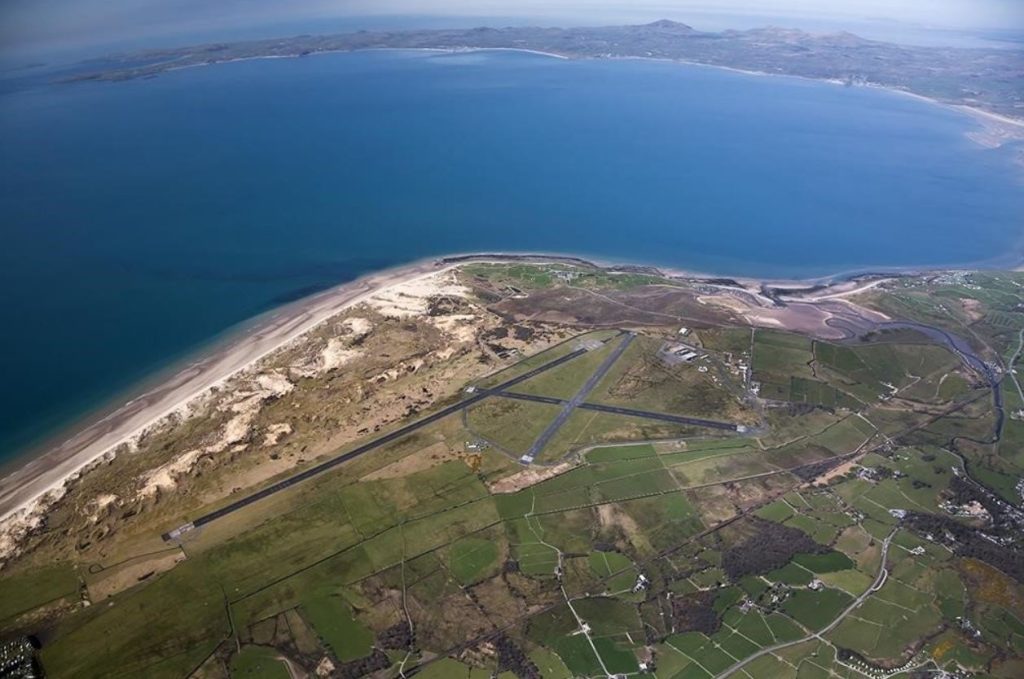
With thanks
This Skyfarer Project was made possible by both the support of the Aerospace Unlocking Potential (Aerospace UP) programme, which supports the aerospace supply chain in the Midlands by helping to unlock its innovation potential and the Snowdonia Aerospace Centre.
Aerospace UP is being delivered by the University of Nottingham and the Midlands Aerospace Alliance. Aerospace UP is supported by the European Regional Development Fund (ERDF).
The Snowdonia Aerospace Centre offers a unique facility in the UK and have invested substantially in creating the ideal infrastructure, services and facilities to support the testing and evaluation of BVLOS operations.
Whilst this operation was a great first step, there is a lot to be done to enable operators like Skyfarer to conduct more routine flights in the years to come without such a long approval process and change of airspace. Skyfarer are pioneering this change in policy through Mayor of the West Midlands Trailblazer Devolution Deal.
Skyfarer: www.skyfarer.co.uk
Skyfarer, Coventry University Technology Park, Puma Way, Coventry, England
Snowdonia Aerospace:
Snowdonia Aerospace Centre, Llanbedr Airfield, Llanbedr, Gwynedd, LL45 2PX
Telephone: 01305 824000
Email: Lee.Paul@snowdoniaaerospace.com
Both Skyfarer and Snowdonia Aerospace Centre are ARPAS-UK Members.

